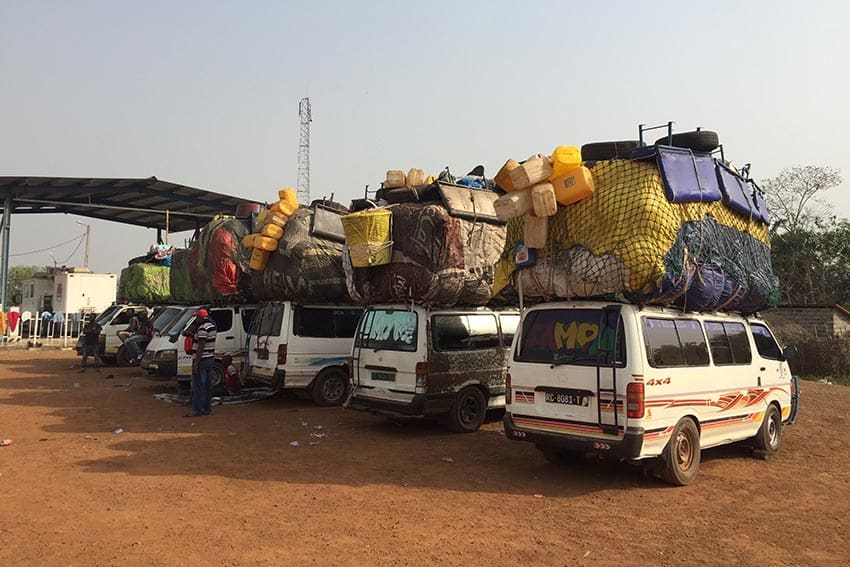
Delivering a Much-Needed Ambulance to Sierra Leone
By Max Globetrotter
The idea of driving an ambulance to Africa had been percolating in my mind for some time; a combination of a good deed and an adventure was appealing, and the structure was in place. All I needed was a friend or two to join me.
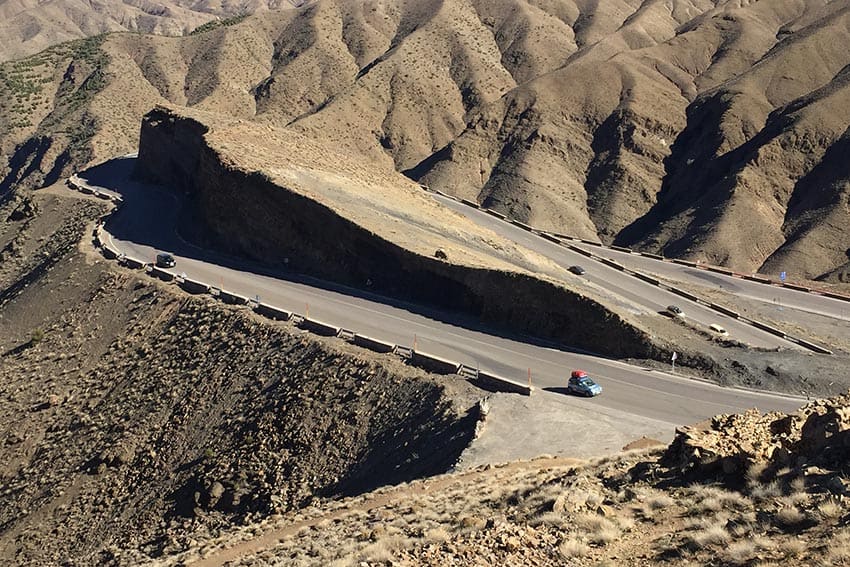
The journey to Sierra Leone was determined by “Budapest Bamako” rally. Operated for a decade by an unusual Hungarian, Andrew Szabo, the rally is primarily a chance for Hungarians who like 4WD vehicles and powerfully distilled liquor to roar across the Sahara.
There were about 200 or so vehicles, mostly muscular, but with a few smaller and more eccentric entries in the “Spirit” category. Our ambulance suited the latter and we were, by and large, arm-candy for the brawnier vehicles, and one suspects, the key to the event having some kind of charitable status. In practice, it meant that the day’s pace was driven by the highest capabilities rather than a slightly more sedate tempo that we might have preferred. At the time, however, we didn’t quite realize the pace or conditions.
All I needed was a friend or two to join.
Alan, an Australian friend of many years, and operator of a catamaran that took folks to snorkel and scuba on the Great Barrier Reef, was in Vancouver, pondering the tedium of a weekend in that city waiting for another friend, an affable Antipodean ex-submariner, Steve, to join him for a weeks fishing in Alaska.
Budapest Bamako

Operated for a decade by an unusual Hungarian, the “Budapest Bamako” rally is a fixture on the bizarre-travel-idea-circuit.
It is a contemporary Paris/Dakar rally and offers adventurers an opportunity to roar across the Sahara in 4WD monsters, or join their “Spirit” category and travel in a less suitable vehicle.
Our ambulance suited the latter category, the application filed, our acceptance received and the planning commenced.
It is not quite as straightforward as one might imagine.
The ambulance, a Renault Trafic conversion, was sourced from a French business who specialized in selling reconditioned ambulances; licensed, insured, and tucked away in a garage in France’s Deep Aude Valley.
We started to compile lists. Lists of spare parts, batteries, tents, dried food, water bottles, paperwork, and other endless lists.
A Canadian and two Australians Steve decided to join us, and happily so as his submariners’ skills of “packing large amounts of kit into restrictive places with a chance of retrieval” came in most useful, as did his humor and fund of stories), coordinating the outfitting of an ambulance sitting in France was less than ideal, but it worked.
Starting Out with a Letdown
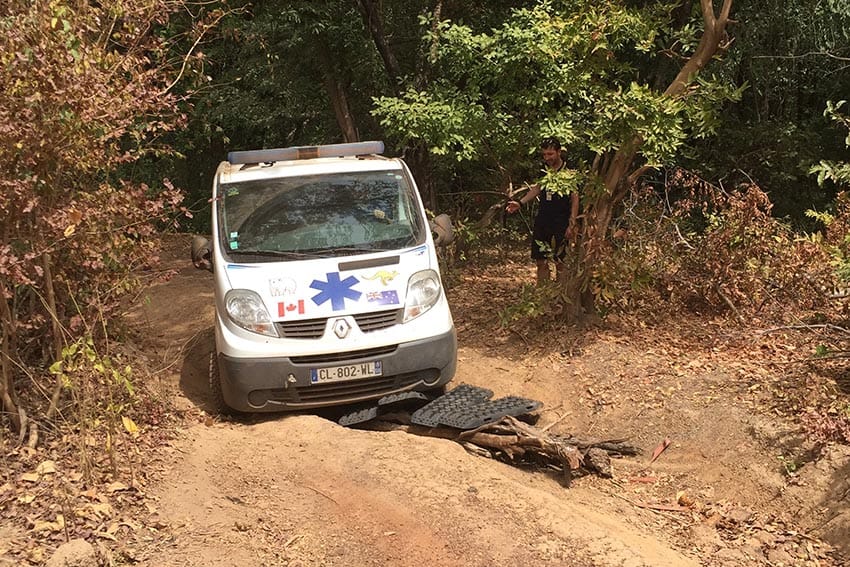
The journey’s beginning was, in fact, a bit of a letdown. My computer crashed while I was in France, and I decided to hurtle down the Spanish coast to Gibraltar to seek guidance.
The theory being that in the event I needed a new one, it would have an English keyboard.
As it happens, it was an accumulation of dust in an obscure orifice; easy and cheap, and I found myself with a week to kick around the Costa del Sol. Which, in the off-season, is dull. So enough said.
We met, Alan, Steve, and I, in Ceuta; a peculiar Spanish enclave in Morocco chose as our starting point due mostly to its peculiarity and also to the fact that its border with Morocco seemed generally straightforward, as it turned out to be.
We were perky, that morning. The ambulance was clean, our maps neatly creased and our luggage and spares packed tightly as only a submariner can do. Eight thousand kilometers to go, we eased into the traffic, passed through the border, and launched ourselves onto Morocco’s rather fine highway system.
Journey to Sierra Leone
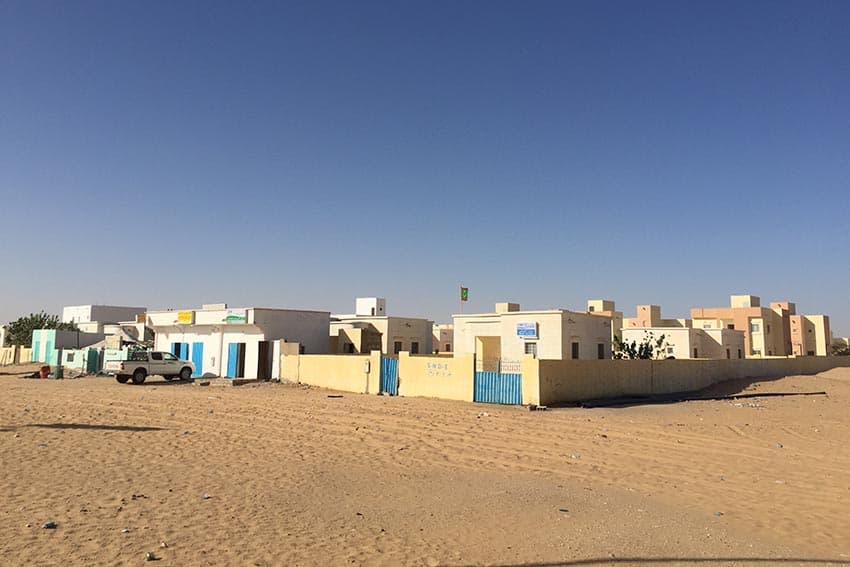
The journey to Sierra Leone was determined by the fact that Budapest Bamako is primarily a rally for Hungarians who like 4WD vehicles and powerfully distilled liquor.
There were about 200 or so vehicles, mostly muscular, but with a few smaller and more eccentric entries in the “Spirit” category.
We were, by and large, arm-candy for the brawnier vehicles, and one suspects, the key to the event having some kind of charitable status.
In practice, it meant that the day’s pace was driven by the highest capabilities rather than a slightly more sedate tempo that we might have preferred.
However, we were off and the first day took us through to Marrakesh; a day of surprises really, from the splendor of the northern mountains, the richness of the country’s agricultural sector, the incredible infrastructure built around the Tanger Med port and the incredible pollution that hung over Casablanca.
On we drove and at sunset hit the Marrakesh rush-hour with cars, motorcycles, bicycles, and belching buses all vying for space and attention.
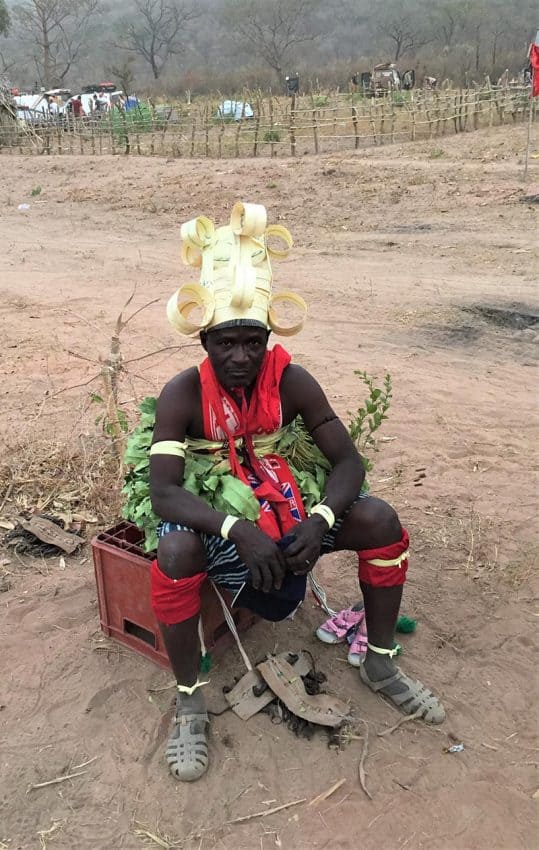
An overnight and away again in the morning. Climbing up through the Atlas Mountains, thrilled and astonished at the massive road construction that made the journey easy and allowed us to marvel at the extraordinary scenery.
As we drove deeper into the country, the shift of influence in dress, architecture, and village patters became more noticeable.
The desert became closer, the land and weather drier and life harsher.
Camping in the Bivouac
And it was our first-night camping; the “bivouac”, as these campsites were characterized, was at the end of 30 kilometers of a pounding desert surface, unmade rocks the size of heads strewn in a rough trajectory and as always, the setting sun in our faces.
We raced across the sands in a most dangerous race against time until, 300 meters before the safety of the “bivouac” the ambulance refused to go an inch further, its front axle buried in the sand.
This is when we saw the advantage of the pace-making Hungarian Monster Trucks and their towing abilities.
In the morning we retraced the 30 kilometers, slowly and in astonishment at the previous evening’s journey; with little in the way of direction and a GPS that was quietly chuckling at us, we pushed through the rocks in a most un-Emergency Vehicle like fashion, and eventually made it back to the road; where we turned left and headed into Western Sahara, an unusual part of Morocco.
Big Morocco
Morocco is a large country; it was only after 2,800m kilometers, two hotels, one bivouac, and three sunsets that we arrived at the Mauritanian border. Land borders are always interesting; the clash between cultures, politics, social tolerance, and economies always makes for interesting transitions.
The official facilities usually a few kilometers apart but indicative of the gulf between them. This border was no different.
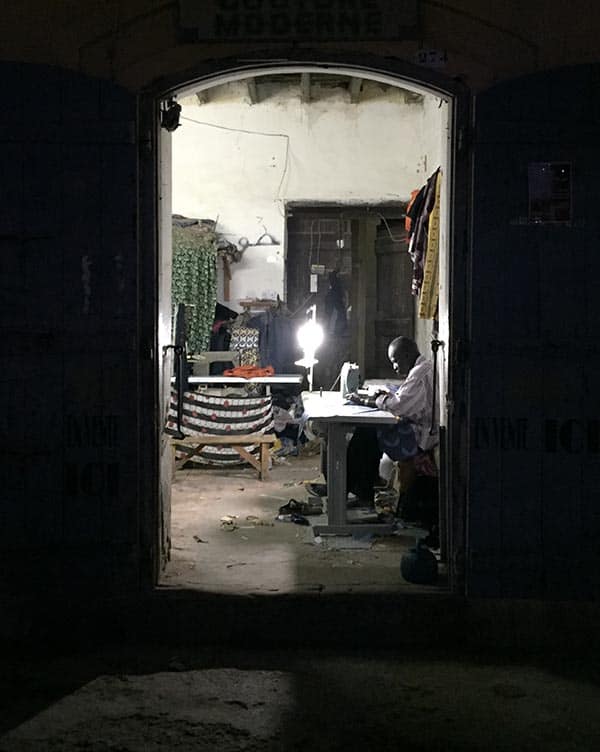
The Moroccan exit facilities were as to be expected; orderly, under a patina of chaos, but completed in a surprisingly short time with surprisingly good cheer, the border gate opened and we headed into the “No Man’s Land” that separated the two countries.
A Dystopian Landscape
At first, the dystopian landscape was ordered; abandoned vehicles in some rough order, the road hard-topped and we moved in an approximation of a straight line.
Suddenly this changed. The road surface disappeared along with most driver’s will to continue in a straight line, the abandoned vehicles spread out, the rocks came through the road, the land became a scene of abandonment.
Refugees, having left Mauritania but denied entry into Morocco seemed to live among the detritus offering safe passage and a useful avoidance of land mines to passers-by for a few coins; the land unruled and unkempt, two or three kilometers of land that was dangerous from brigand or bomb lay between the two official outposts. It felt almost lunar.
After the sharp passage of the Land Between, the Mauritanian post was almost a let-down, but quite obvious that we had entered a new and very different country.
The light was intense, the colors abrupt and invasive, the lines of sand, sky, road, and cloud layered upon each other in harsh bands. This is a severe land, not a land of comedians but a country of survival.
Covered with Sand
The road across the desert was black, the sand an intense yellow-white. The huts, the nomads nod to a temporary respite from wandering, lay by the road, some covered in sand, some in use, but all looking hardened by the constant wind and baking heat. There is little sign of an economy but powerful signs of lives being lived.
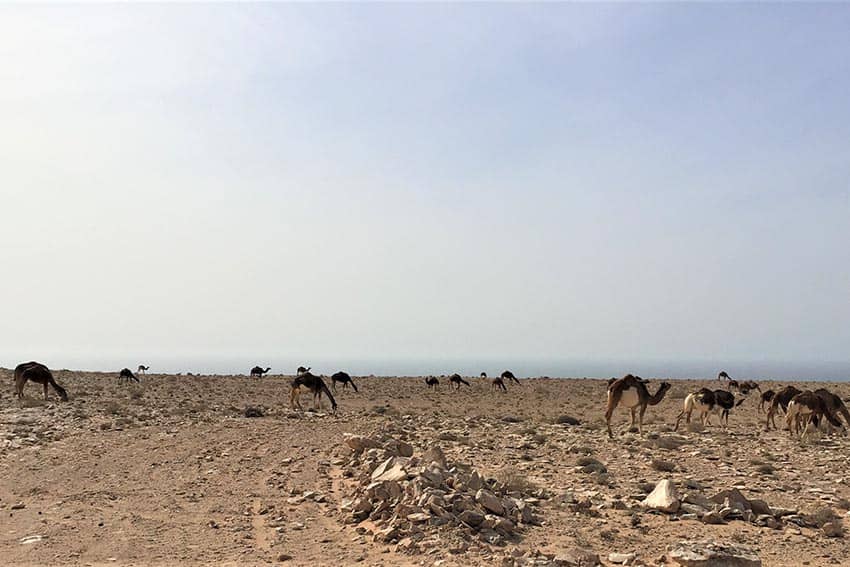
The journey continued its relentless pace, past endless dunes drifting across the road, camels wandering, goats finding food and everywhere the isolation of the few people who lived there. Police checkpoints became a highlight, and finally the overnight stop and a night under the stars; which are, it must be said, considerably more vibrant in the desert.
The Hungarians partied into the night and finally wore themselves out just before their revelry ended forcefully. The morning brought bright skies, the relentless wind, and another 700 km of blacktop cutting its way through the desert as we headed to the capital, Nouakchott, yet another curious place.

It seemed that with the exception of the iron-ore deposits of the north, all economic activity in Mauritania was concentrated here: administrative buildings, doughnut shops, motorcycles, Mauritanian Millennials and city life. We had the treat of an actual hotel and some hours of comfort.
We headed on. The landscape changed as trees appeared and the road worsened until the dreadful final 30 kms up to the Senegalese border where the formalities were unsurprisingly inefficient.
Apparently unaware that 600 people in 250 vehicles would be showing up, they seemed both unprepared and unperturbed. The shuffle of papers, taken from one building to another for a look and a stamp took a few hours, and then we were on our way to Saint Louis.
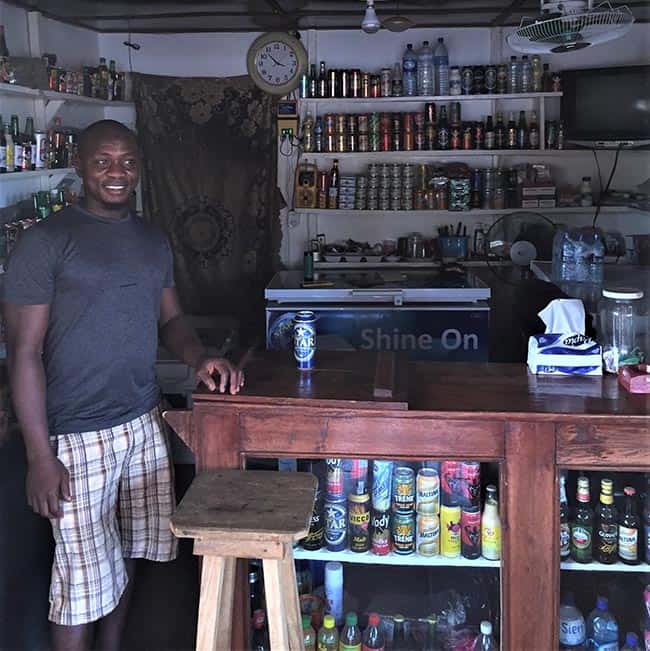
Senegal was “Real Africa”. The desert behind us, the land becoming redder and the people now African. Saint Louis, the border town and a French colonial city, was delightful.
Shabby and peeling, bustling and calm in equal measures and lying comfortably along the banks of the Senegal River, Saint Louis deserves far more than the eighteen hours that we stayed.
The music of West Africa is intoxicating, and as the sun set and we wandered out in search of food it was hard not to start quietly dancing one’s self.
Mildly embarrassing, of course, but hard to keep still; perhaps it was the culmination of five days in the vehicle, but it was great.
Leaving in the morning was a drag, but with another 600 km run, there was little choice or time to waste. The drive was actually pretty dull. Small dusty towns, donkeys and bicycles, mothers chasing sons, kids playing football, men drinking beer, tractors lurching across the road, and always music in the background.
A Loud and Laughing Place
Africa, and now there was no mistaking that we were in Africa, is a loud and laughing place; the villages we drove through had, it seemed, changed little in millennia.
Groups of earth houses with thatched roofs collected around a central courtyard; men smoking and women working, children chasing themselves and a goat or two around, smoke rising from a fire and the sun setting as it had many thousand times.
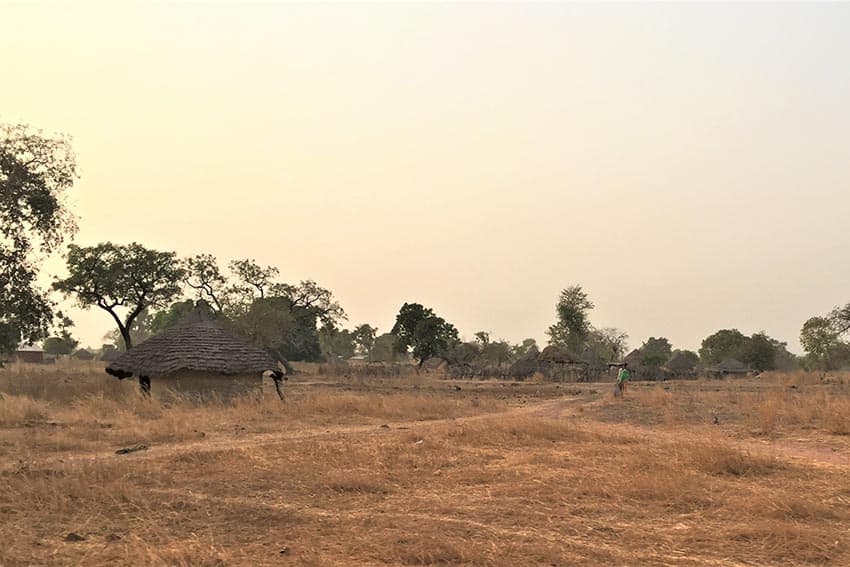
For us another camp and the hope that the Hungarians were reaching the end of their stash.
We woke to another day, deeper into the forest, realizing that somewhere was the border between Senegal and Guinea. Our route had been changed the previous night by riots that had broken out in Labe, Guinea’s second city.
The country was in the throes of an election, and clearly not everyone was wedded to Swiss concepts of democracy. Rumors ran through the camp about the danger level in Guinea and how we would reroute; violence was all around, apparently, and no passage safe. The forest seemed to draw in, and the small, compact villages felt secure and cozy.
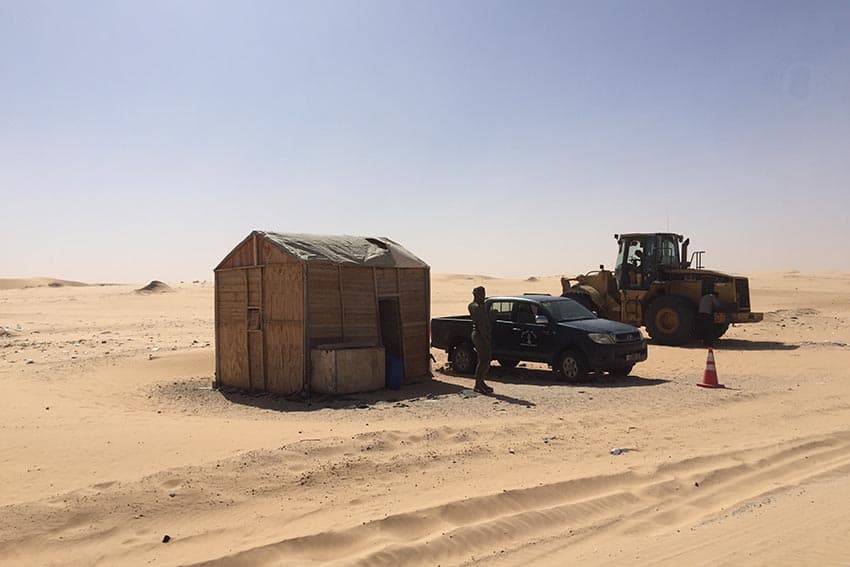
The solution, we were advised, was a “Marathon Run”; only 1,200 kilometers around to the coast, south to Conakry, and then inland to the predetermined camp.
“A pity to mess up the camping schedule”, seemed to be the general idea, so, after a night of fitful sleep punctuated by the odd cry of a belligerent Hungarian in search of sustenance, we head off into the unknown.
The hardest day’s drive of all. The first leg, some 180 km took us nine hours to cover. The road at first was not even there, we were in the country for 4WD Monster Trucks, not genteel ambulances.
We passed wrecked trucks, abandoned cars, rusty bicycles, and assorted pieces of passing cars., including a wheel rim that became detached from our ambulance during one particularly aggressive climb. It was a challenge, and the country so isolated we had no idea when we crossed the border.
Driving past communities who had probably never seen so many vehicles in their lives, we shook and clattered our way into Guinea.
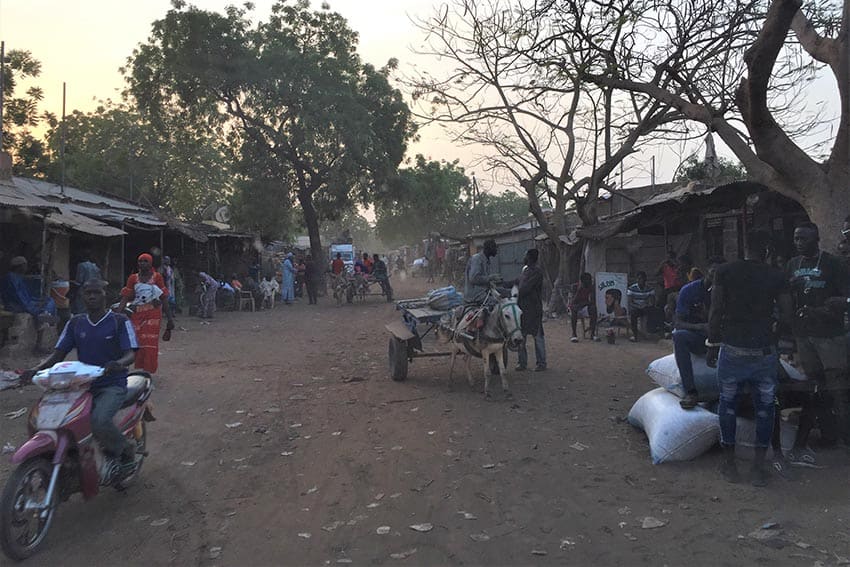
The border formalities were held in a building some fifty kilometers inside the country. We lined up, showed papers, had them inspected and stamped and finally a very well-nourished officer trousered €10 from each of us and sent us on our way. A nice little earner.
Red dust, battered wheels, bloodshot eyes, liters of water, more dust, and finally, the coast. From there it was only another 800 km to run, and valiantly we turned south. We stopped in Conakry, the capital, where we could get a shower and a hotel and abandoned any thought of reaching the camp.
Conakry at Midnight
Conakry at midnight was hopping; heavy traffic, few streetlights, neon club lights, and thumping music. Not a sign of a riot, of course, but a heaving city that had no interest in falling asleep. Unlike us.
One more day, from Guinea to Sierra Leone. One more night in a camp and the final run into Freetown escorted by police over 80 kilometers of highway that had been closed for us. It was a relief to reach the Radisson Blu, only 9,420 km from my starting point in France, and now, ready to find the group who would take our ambulance and hand it over.

Who Got the Ambulance
Babados Luseni is The Man; he works with the Mokanji Medical Center, the recipient of the ambulance once it was cleaned, and the bits of wheel rims that came adrift in Guinea were replaced.
We met him in Freetown, and he helped us through the various bits of French and African bureaucracy needed to leave the vehicle in Sierra Leone. The clinic is small, some 150 km inland from the capital of Freetown, and a region that needs all the help that it can get.
The journey was fascinating. Too fast in many ways, but the objective of getting the ambulance to somewhere where it was needed was achieved. The opportunity to see Africa at such close quarters was a privilege that will not be forgotten quickly.
It is strange how soon one’s mind starts percolating with the whiff of the next adventure.
- Ambulance to Africa: A Noble Deed, Indeed - June 12, 2020
- West Balkans by Train, Bus and Ship - April 11, 2018
- Muscat, Oman: An Exotic Adventure - May 16, 2016


Wonderful adventure story….can feel the heat, hear the banging and rattling of the Renault Trafic and smell the dust of Africa. Like being along for the ride….thanks Max!
Excellent article Max! Very well written! Thanks for posting the link to it.